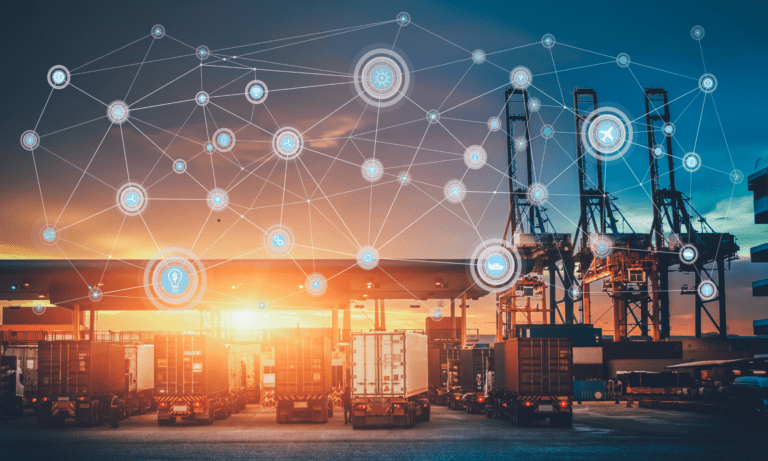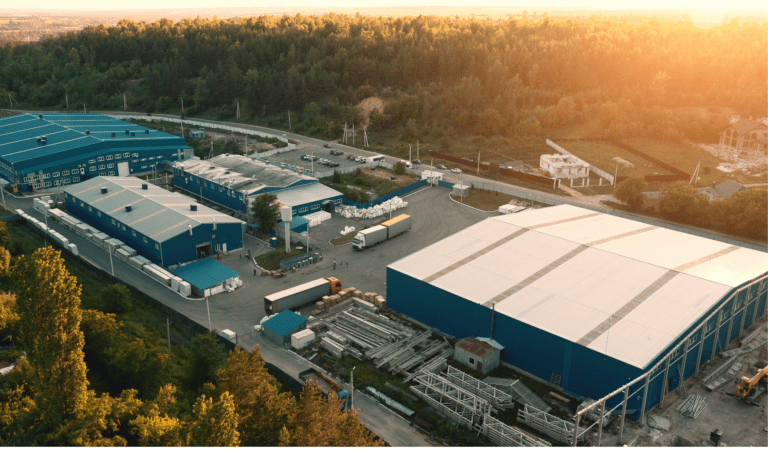Are you maintaining a competitive edge in the transportation and logistics industry? In a digital age, working smarter rather than harder when it comes to managing your fleet doesn’t have to be a complex undertaking.
By implementing some basic digital tasks for drivers (and your admins), it’s much easier to focus on expansion and things that matter…rather than paperwork.
The Technology Situation for Many in Transportation and Logistics
Whether you are focused on storing and packing, or simply delivering goods, one challenge in this space is being proactive in protecting your fleet and assets.
As a manager, you’re probably wearing multiple hats, and it can be difficult to stay proactive if the tools you use everyday aren’t designed for today’s challenges.
In this post, we’ll break down common barriers to success in this space traditionally, and 5 ways replacing manual or outdated processes with digital technology can transform your business for the better.
Are You Facing These Barriers to Success a Digital Solution Could Solve?
When many people think of challenges facing the logistics or transportation space, they think of rising fuel costs and driver shortages. And while these two hurdles definitely merit attention, there are many other challenges facing your business that can also have a direct impact if not addressed.
Here is a list of some of the top barriers to success as outlined by Logistics Management Magazine:
Dependence on Old Technology
Most industry leaders agree that advances in technology are necessary for continued success in the logistics arena. However, not all logistics companies are able to afford new technology and others lack the resources or experience to implement new changes.
While some systems like payroll are increasingly digital in nature these days, critical tasks employees must perform daily like inspections and maintenance still rely heavily on paper. The good news is that implementing digital systems to replace these outdated processes is more affordable than ever.
Outdated Business Processes
Many logistics providers are struggling to stay abreast of business process improvements. While the desire and intent are often present, legacy systems sometimes hinder their ability to introduce more advanced business processes.
This point is referenced in this article in Inbound Logistics, highlighting the advantage having access to raw data and open APIs is. This is noted as being a big differentiator for companies using modern products in logistics vs. those stuck with legacy systems without these data sharing capabilities.
Tightening Compliance Regulations
Having spent any time at all in this industry, you probably know carriers also face more compliance regulations than ever. Accountability is a big focus, and logistics companies often strain to stay on top of the latest regulations imposed by local, state, and federal authorities.
Failure to comply with regulations can lead to harsh penalties and sanctions. As the FMCSA continues to evolve with time, so should the tools you use to make it easy to remain compliant.
Customer Service Deficiencies
Many customers are now demanding complete transparency about the location of their shipments at all times. Failure to provide immediate access to shipment information has prompted logistics providers to take measures to improve their tracking and record-keeping.
Customer expectations regarding vehicle cleanliness and maintenance are also changing, with more customers than ever expecting their goods to be carried in neat, well-maintained vehicles.
Environmental Concerns
Anti-idling regulations and emission reduction guidelines enacted by local and state governments have forced carriers to reexamine their fleet management procedures and develop eco-friendly reporting procedures.
At the same time, a growing number of business owners are placing a high priority on environmental preservation and conservation of resources.
5 Ways Digital Transformation is Improving Transportation and Logistics
If you are facing any number of these challenges with your current process, one of the best places to start is with auditing where you’re at in respect to inspections and maintenance.
Here are a few ways digitalization is improving the way fleet managers in both transportation and logistics are running their businesses.
1. Improved DOT Compliance
For any growing business in this space, DOT compliance is critical to a company’s success and ability to continue operating. Failure to comply with DOT standards can result in harsh financial penalties, revocation of your operating license, or injury to your logistics team.
Rick S., a Transportation/Logistics Business Owner and Capterra Reviewer, recently experienced DOT compliance benefits since going digital with Whip Around, a solution that eliminates paper-based inspection processes.
[The Whip Around solution] is simple and powerful. I’m a small owner/operator and this is a great tool for keeping track of mileage, as well as details that DOT might want to see. I implemented this for a previous employer and have continued to use and enjoy it as an owner/operator.”
As an example of a tool that is helping owners like Rick, Whip Around’s inspection platform was designed to help you achieve DOT compliance by enabling drivers to report their inspections swiftly and more accurately.
2. A Streamlined Inspection Processes
When it comes to those DVIRs (Driver Vehicle Inspection Reports), drivers no longer have to spend time scrambling to find a scrap of paper to jot down their mileage thanks to companies that have made the transition from paper (or legacy systems) to a modern digital solution.
An industry-leading digital DVIR solution like Whip Around can streamline the inspection process to ensure that inspections are undertaken consistently and in a timely fashion. Record-keeping is seamless and errors are minimized.
In addition, your administrative staff will thank you for no longer having to interpret illegible handwriting when they file paperwork.
3. Chain of Responsibility
Ensuring that all members of your organization play an active and responsible role in supply chain activities is essential to meeting NHVR’s enhanced compliance regulations. These types of regulations are already in place in countries like Australia, but also likely to influence federal legislation by FMCSA in the United States.
Recent changes enacted at the end of 2018 call for companies in the heavy vehicle transport industry to increase their focus on activities such as reporting, risk control, and meeting vehicle standard requirements.
The good news is that transportation companies that leverage the right digital solution for inspections and maintenance can improve in all of these areas by creating a chain of responsibility.
Since data can be collected from drivers with digital DVIR tools (as mentioned previously), this data can be made available to your administrative team, finance, mechanics, or anyone else who needs access.
When it comes to the entire COR issue, digital tools like Whip Around play a huge role when it comes to driver liability and leaving a digital paper trail in the event of an investigation.
4. Support for Multiple Vehicle Types
Few industries feature a more diverse collection of vehicles than the logistics industry. In addition to the wide variety of trucks and trailers used to retrieve and deliver orders, there are forklifts, pallet jacks, hand trucks, and reach trucks.
Whenever a new asset is added with different inspection of maintenance requirements, relying on forms that are either paper or aren’t customizable simply won’t cut it.
Logistics managers can keep all of their vehicles in good working order with a single app these days, customizing the inspection process for each vehicle.
This eliminates the need to have to continually print out forms, or order inspection forms that aren’t customized like the need to be.
“We’ve been using Whip Around for over a year now and it’s the perfect solution to our inspection requirements. The initial set up/follow up was exceptional and it’s ease of use makes it so my whole team was able to implement it immediately. We use it everyday, on all our vehicles, from big trucks to our pallet jacks. As the administrator, having zero paperwork to deal with is probably my favorite part.”
– Brent M., Automotive company President and Capterra Reviewer
5. More Organized and Maintained Vehicles
There is more to keeping a transportation fleet up to date than tracking mileage and service needs.
As a manager in logistics or transportation, you need to properly manage trailers or trucks that need basic maintenance, and do this in an organized fashion. Creating maintenance schedules and being able to view trends over time is an added benefit of the digital transformation occurring in this space.
When vehicles are able to be kept in top physical condition thanks to automation made possible through technology, simple tasks like scheduling routine oil changes based on vehicle mileage can completely transform a company from being reactive to proactive.
Without using data to make these maintenance-based tasks easier, companies will always be stuck with guessing when things need to get done, or forgetting to fix important vehicle faults.
Taking the First Step Towards Digital Transformation in Logistics or Transportation
The challenges facing the logistics industry seem to grow on a daily basis, and not using a digital solution that gives you data makes it virtually impossible to make informed decisions.
Digital transformation doesn’t mean building out a huge technology team on day one, but rather implementing a simple digital solution to make day-to-day life easier. Because no one wants something that drivers, mechanics, or your staff will be overwhelmed or confused by.
Fortunately, there is a simple way for transportation companies to overcome these challenges associated with paper or other legacy solutions.
Get Started Today
Ready to simply take the first step? For many of our customers, inspections and maintenance are good starting points for adding digital technology that can have a major impact.
We invite you to contact us at Whip Around to learn about the many ways our app can help your team with digital vehicle inspection reports (DVIRs), as well as your maintenance process.
If you’re ready to gain a competitive edge in the logistics industry, request a demo today to see how Whip Around is helping thousands of drivers and managers ease the burden of vehicle and assets inspections, maintenance, and modernizing their businesses with simple technology.






